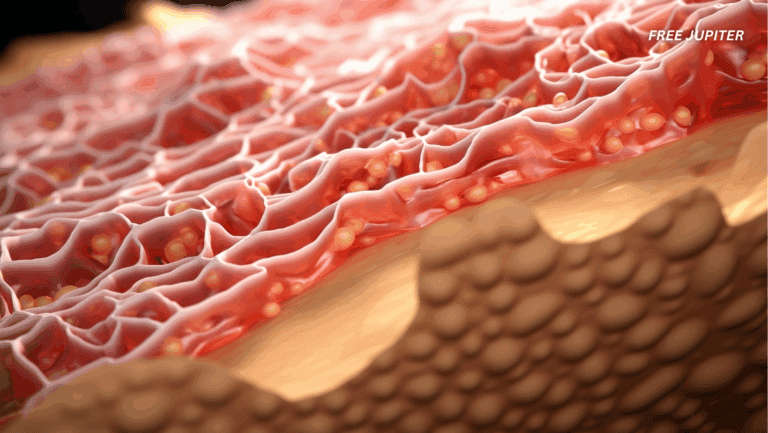We’ve been told time and again that what we eat matters. But what if the order in which we eat those foods plays just as important a role?
Enter meal sequencing—a not-so-new concept that’s gaining traction among dietitians, doctors, and curious eaters. This approach doesn’t involve any dramatic diet changes, strict calorie counting, or giving up your favorite foods. It’s simply about rearranging the order in which you eat what’s already on your plate.
And here’s the kicker: studies suggest this small shift might help you lose weight, manage blood sugar, and feel full longer—without needing to eat less.
Let’s unpack what it is, why it works, and how to try it without making food feel complicated.
🥦 So, What Exactly Is Meal Sequencing?
Think of meal sequencing as putting your food in the correct “queue” before digestion begins.
- Start with fiber-rich, non-starchy vegetables
- Move on to protein and healthy fats
- Save the carbohydrates for last
Imagine sitting down to a plate of grilled chicken, broccoli, and mashed potatoes. Instead of diving into the potatoes first (tempting, we know), you’d begin with the broccoli, then the chicken, and finish off with the potatoes.
This specific order may seem random, but there’s a growing body of research and expert opinion suggesting it’s actually smart metabolic strategy.
Read more: New Study Finds Common Dietary Supplement May Lower Aggression By 28%
🍽️ Why Order Matters: Blood Sugar 101 (Without the Science Jargon)
Let’s take a moment to talk about blood sugar, because it’s the star of this show.
When we eat foods—especially those high in carbs—our body breaks them down into glucose (aka sugar), which enters the bloodstream. This gives us energy, but too much glucose too quickly? Not so great.
Those dramatic spikes in blood sugar can lead to energy crashes, hunger, fat storage, and over time, serious health issues like insulin resistance or type 2 diabetes.
Meal sequencing helps slow down the speed at which sugar enters your blood, flattening the curve of that post-meal spike. The trick is eating foods that slow digestion first—like veggies and protein—before introducing faster-digesting carbs into the mix.
According to Caroline Susie, a registered dietitian and spokesperson for the Academy of Nutrition and Dietetics, “Starting with vegetables, protein, and healthy fats—before eating starches or sugary foods—may help blunt post-meal glucose spikes.”
🧬 What the Science Says
Meal sequencing isn’t just a nutrition myth making the rounds online. There’s actual research backing it up.
One study published in the journal Nutrients tracked people over five years. Those who made a habit of eating vegetables before refined carbohydrates (like white rice or white bread) experienced better long-term blood sugar control. The group that didn’t change their eating order? Not much improvement.
Another clinical study out of Weill Cornell Medical College found that when people ate vegetables and protein before carbs, their post-meal blood sugar levels were 29% lower compared to when they ate carbs first.
This kind of blood sugar stability isn’t just good for people with diabetes. It’s helpful for:
- Those trying to lose weight
- Anyone experiencing energy crashes
- People who feel hungry again shortly after eating
As dietitian Sandra Arevalo explained, “When you eat carbs by themselves, it’s like sending sugar straight into your bloodstream. But when you cushion them with fiber or protein, that process slows down.”
💡 Bonus Benefits: It’s Not Just About Sugar
Let’s talk about fullness, or satiety, in scientific terms. Ever notice how a bagel can leave you hungry two hours later, while a veggie omelet keeps you full until lunch?
Meal sequencing can also influence how full you feel—thanks to hormones like GLP-1 (glucagon-like peptide-1).
When you eat protein before carbs, your body releases more GLP-1. This hormone delays how quickly your stomach empties, so food hangs out longer and keeps you full. That leads to less snacking and fewer cravings, which naturally supports weight loss over time.
Fiber also plays a role here. It soaks up water, bulks up in your stomach, and slows down how fast sugar gets absorbed into your bloodstream.
So when you:
- Eat fiber and protein first
- Follow it with carbs
- Stay hydrated
You’re basically tricking your body into staying fuller for longer—without needing a second plate.
Read more: The Kinds Of Proteins You Should Eat Every Week, According to a Dietitian
🥕 Not All Carbs Are Created Equal
Let’s not vilify carbs entirely. Carbohydrates are not the enemy, but some are better teammates than others.
Here’s the breakdown:
✅ Complex Carbs (The Good Kind)
- Found in whole vegetables, beans, lentils, quinoa, oats
- Rich in fiber, vitamins, and minerals
- Slow to digest, causing a gradual blood sugar rise
❌ Refined Carbs (The Sneaky Ones)
- Found in white bread, pasta, pastries, soda, sweetened cereals
- Processed and stripped of nutrients
- Absorbed quickly, causing fast blood sugar spikes
Meal sequencing doesn’t mean cutting out refined carbs entirely—it just encourages you to eat them last so your body has a buffer before the sugar rush hits.
📊 Enter the Glycemic Index (GI)
If you’re looking for a tool to help you understand how foods impact your blood sugar, say hello to the glycemic index.
This ranking system scores foods from 0 to 100 based on how quickly they raise blood glucose:
- Low GI (55 or less): Beans, lentils, sweet potatoes, most fruits, leafy greens
- Medium GI (56–69): Whole wheat bread, popcorn, brown rice
- High GI (70+): White bread, cornflakes, candy, soda, white rice
Foods with a lower GI are generally better choices for people trying to control blood sugar or lose weight. Combine low-GI foods with meal sequencing, and you’ve got a solid, science-backed strategy for better metabolic health.
🥗 How to Try Meal Sequencing (Without Overthinking It)
Here’s a simple three-step guide to applying meal sequencing to your next lunch or dinner:
1. Start With Vegetables (Especially Non-Starchy Ones)
- Think leafy greens, cucumbers, bell peppers, broccoli, cauliflower
- These are loaded with fiber and water, which slows digestion
2. Move on to Protein + Healthy Fats
- Grilled chicken, fish, tofu, eggs, nuts, olive oil, avocado
- These nutrients keep you full and help regulate hunger hormones
3. Finish With Carbs
- Rice, potatoes, bread, pasta—eat these last
- This reduces the spike in blood sugar and prevents energy crashes later
Optional Step 4: Drink Water Throughout
Water helps fiber do its job better. Plus, thirst can sometimes be mistaken for hunger.
🧑⚕️ But Wait—Is This Right for Everyone?
Not necessarily.
If you’re someone with diabetes, insulin resistance, or another medical condition, it’s always best to speak with a doctor or registered dietitian before changing your eating habits. What works for one person might not work the same for someone else.
And if you’re someone who doesn’t eat meals in traditional “courses” (hello, stir-fry lovers), don’t worry. You can still apply the idea by eating your veggies first, then your protein, and finishing off with your noodles or rice—even if it’s all in the same bowl.
🧠 Small Habit, Big Results
At its core, meal sequencing isn’t about restriction—it’s about timing. And timing, as it turns out, can make a big difference.
It’s a technique that:
- Doesn’t require special products
- Doesn’t ban any food group
- Works quietly in the background to support better health
Just by eating foods in a different order, you might find yourself feeling more energized, less snacky, and more in control of your blood sugar.
Read more: Expert Shares Natural Drug-Free Method To Mimic the Effects of Ozempic
📝 Final Thoughts
In a world full of complex diets, calorie-counting apps, and food fads, meal sequencing offers something refreshingly simple: just eat your veggies first.
Whether you’re someone trying to prevent diabetes, shed a few pounds, or just avoid the dreaded afternoon crash, this tiny change in how you approach your meals could be the subtle shift your body’s been waiting for.
So the next time you sit down to eat, ask yourself: What should I eat first? Your broccoli may thank you later.










